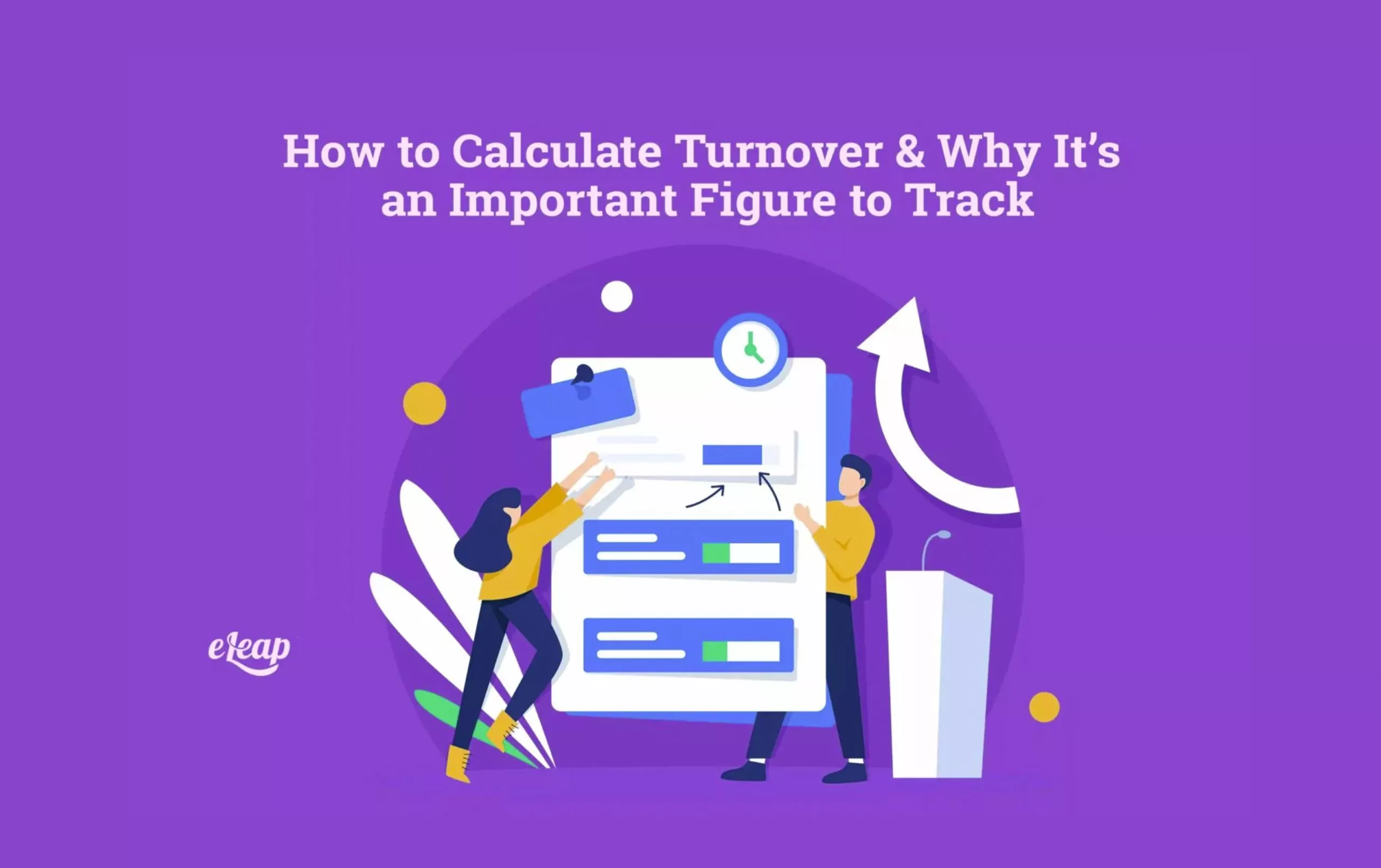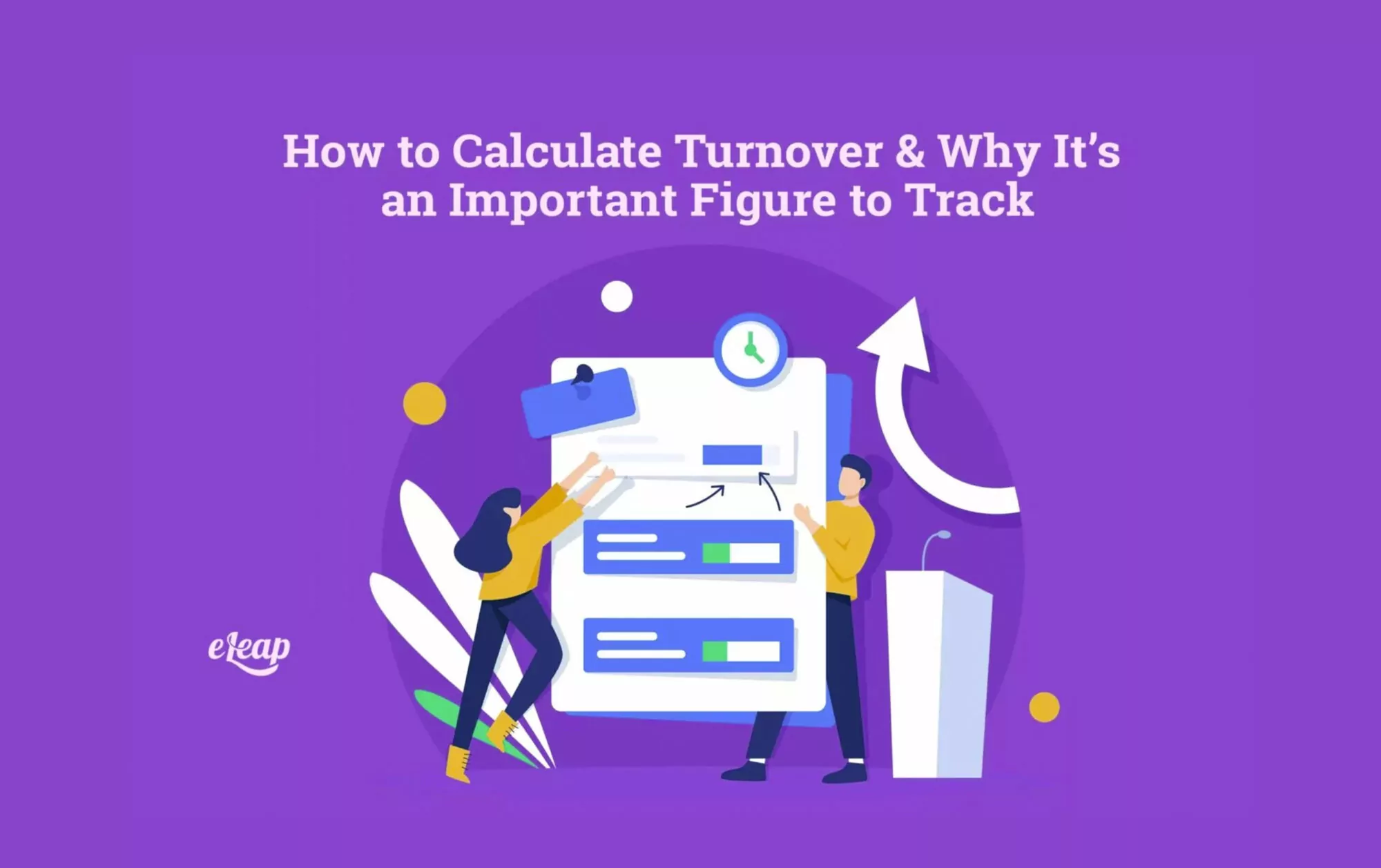How to Calculate Turnover & Why It’s an Important Figure to Track

If you hold a management position or leadership role within the organizational structure of your place of employment, one important thing to know is how to calculate turnover rates within the company and why it’s important to pay attention to it.
Employee turnover rates can provide some insight into employee satisfaction or dissatisfaction. Or even the working environment within a company’s corporate culture.

Employee Turnover Rate – Defined
The rate of employee turnover is the percentage of staff members who leave their position within a company during a given time. Their absence typically leaves a void in the team structure that only a replacement team member can fill.
When considering how to calculate turnover rates, you can either include both the employees that leave and those who take their place or opt to leave new hires out of the calculation. Before we get to how to calculate turnover, however, let’s talk about why it happens in the first place.
Why Do Employees Leave?
It’s a normal occurrence for employees to leave their current place of employment at some point. Retirement is one big reason most people eventually walk away from the office for good. Sometimes raising a family brings people home from work for an extended period. A change in career preferences or goals are another reason an employee might resign from a position if their current role doesn’t give them ample opportunity for advancement or redirection.
While these are usually positive changes, sometimes employees will leave a company due to more negative reasons, such as job dissatisfaction or workplace conflict. Employees are more likely to leave if they feel:
- Overwhelmed by their workload
- Don’t receive enough recognition
- Have a poor relationship with their superiors or coworkers
- Feel they don’t have enough flexibility in their role.
These types of issues can cause employees to leave voluntarily by resigning or involuntarily by being terminated when their dissatisfaction leads to poor job performance.
How to Calculate Turnover Rates
There are a couple of different methods of how to calculate turnover within your organization. The exact calculation you do can depend on whether you include the number of new hires in your calculation, as well as the term for which you are calculating the rate of turnover.
Turnover rates are typically calculated for annual or quarterly periods to get a bigger picture of long-term patterns. Employers who are looking to monitor turnover more closely might need to know how to calculate turnover every month to track the progress of any employee retention methods they might be implementing.
The simplest calculation is to divide the number of employees lost during a given period by the number of employees on staff at the beginning of that period and multiply the resulting number by 100 to create your percentage of employee turnover.
For example, if 15 employees left the organization in a year, and there were 150 employees at the beginning of that year, the annual turnover rate would be 10%. However, this type of calculation does not account for whether the lost employees were replaced during the designated period.
Calculating Turnover with New Team Members
For how to calculate turnover while including new team members, you will instead start by determining the average number of workers for the given time. To do this, you need to know the number of employees at the beginning of the term and the number of employees at the end. Add these together and divide by two to get the average.
Next, divide the number of employees lost by the average number of employees during the period, and then again multiply that result by 100 to reach the turnover percentage.
Building on the first example, if the same company that had 150 employees at the beginning of the year had 175 employees at the end of the year, the average number of employees for that year would be 162.5. We know they lost 15 employees, and dividing that loss by the average 162.5, and multiplying the result by 100 equals an employee turnover rate of 9.23%. You can see that this scenario gives a more realistic number by including new employees in calculating the turnover rate and shows that it’s not as high as the initial calculation would indicate.
Analyzing Employee Turnover Rates
To take it one step further, if the same company’s employee headcount decreases over the year as opposed to increasing, it would show a slightly higher rate of turnover because the employees that were lost were not replaced. The company starts the year with 150 employees and ends the year with 135 employees, creating an average of 142.5 employees for the year. Calculating turnover with the 15 lost employees that were not replaced comes out to a turnover rate of roughly 10.5%.
When deciding how to calculate turnover, it makes more sense to account for all employees that were both lost and gained. Regardless of whether your business had an increase or a decrease in total employees throughout a given time, using the true average number of employees during that time gives you a more accurate representation of the turnover rate.
Variations in Employee Turnover
Once you figure out how to calculate turnover rates and come up with some numbers for your organization, it’s important to keep in mind the variations that can occur with employee turnover rates and the differences that come with different industries.
For example, if your business is the type to see a large hiring influx during certain times of the year, such as around the holidays, you might see a higher rate of turnover due to not needing to retain all those employees year-round. If you work on the core staff team of a recruiting agency, you’ll likely be dealing with very high turnover rates due to the associates you hire taking assignments that are typically temporary.
On the other hand, if the workload needs of your organization are more stable year-round, your turnover rates will be much lower, and any spikes could be clear indicators that there are issues that could be resolved.
How to Reduce Rates of Employee Turnover
When an organization’s leaders know how to calculate turnover in their organizations, they can easily decide whether any employee retention or turnover reduction strategies should be put into practice for their teams. How do you know what kind of strategies to use? Considering some of the reasons employees are leaving in the first place can give you a starting point for turnover reduction strategies. Here are a few such strategies that can help reduce turnover:
Employee Feedback Surveys and Exit Interviews
Two direct ways to obtain insight as to why your organization has a high turnover rate are through employee feedback surveys for current employees and conducting exit interviews with those who are leaving. Both strategies are ways through which management can get specific information regarding why employees decide to leave. However, this information can’t just be gathered and then not acted upon, leaving organizational issues unresolved. If the reasons are related to problems within the work environment, improvements can be made for current and future employees.
Employee Appreciation and Recognition
While gestures of appreciation or recognition for an employee’s hard work won’t cause them to overlook any dissatisfaction they might have with their job, they still go a long way as morale boosters. A key element of whether an employee will stay in a position is whether they feel they are valued in their role and making a difference. Bear in mind it doesn’t necessarily get to the root of any problems an employee may be facing at work. But, finding ways to give them regular positive feedback can make them much less likely to quit.
Employee Growth and Development
If some of your former employees have cited a “lack of opportunity for advancement” as one of their reasons for leaving, there are ways to improve upon those things for your current employees. Sponsoring continuing education or skill workshops can keep your employees feeling confident in their roles and even prepare them to step into leadership roles within your organization.
Leadership Training
There is a saying in the realm of human resources that claims that “good employees will leave bad managers.” For that reason, investing in the training of management personnel can lead to better employee retention. It will lead to all employees having better work relationships with their superiors.
Competitive Compensation
Great compensation and benefits can not only get employees in the door but can also help with employee retention. However, like appreciation and recognition strategies, it doesn’t always solve existing problems in the eyes of the employee and not be relied upon to be the sole reason employees will stay. Instead, competitive compensation strategies help buy some time for other retention strategies to have positive effects on employee satisfaction.
In Summary
Organizational leadership teams that know how to calculate turnover and reduce high turnover rates can help drive the success of any organization with multiple employees. High employee turnover can result in increased expenses for a company that has to replace old employees and train new employees more than it should have to. While some people leave a job due to normal life changes, learning about some of the negative reasons employees resign can help employers improve employee satisfaction, which will ultimately lead to greater company success.
The eLeaP continuous performance management system provides organizations with powerful options to attract and retain high caliber team members.